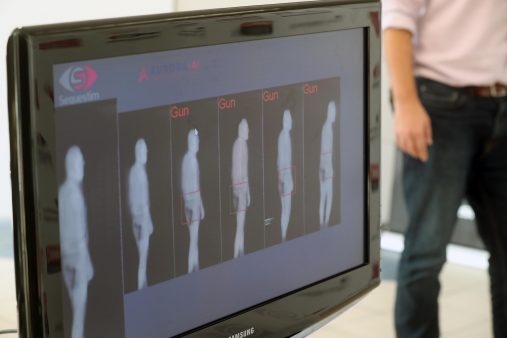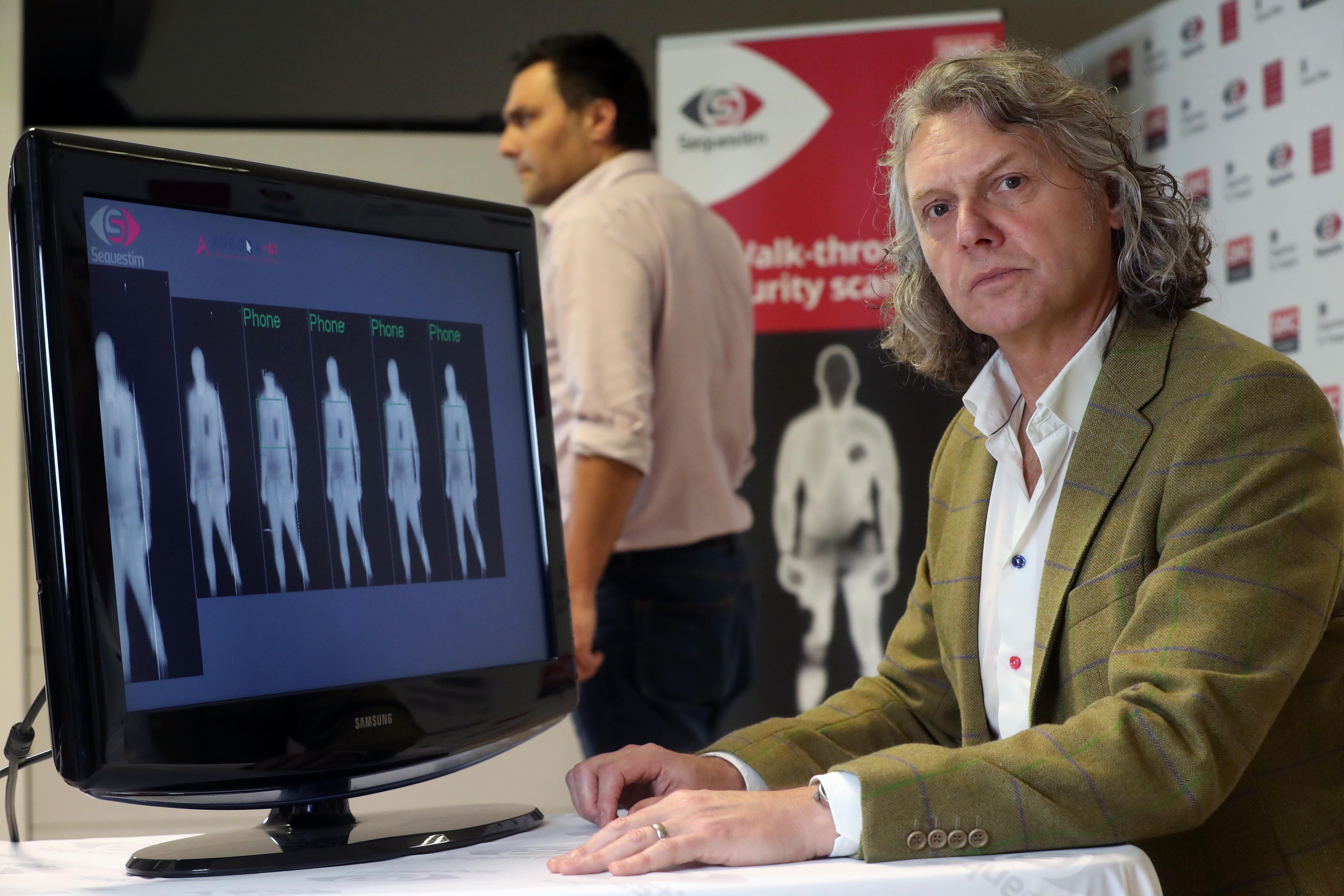The science behind Cardiff’s space-age scanner
20 December 2018
A super-sensitive passenger scanner that reveals hidden security threats has been trialled at Cardiff Airport. The walk-through device applies space technology to image human body heat. The result of a collaboration between Sequestim Ltd and Cardiff University scientists, the technology can distinguish between threats and non-threats without the need for passengers to keep still or remove outer clothing.
Here, Ken Wood, Sequestim’s Sales and Marketing Director, explains the innovative science behind the scanner.
“We all know what it is like at airports these days, standing in a long queue, taking off coats and jackets, belts, watches, phones and then often being stopped and searched as we pass through the scanner. It’s a slow and frankly unpleasant experience, and we put up with it because we all know how important it is these days. We think our new device will change all that.
“Our camera detects millimetre-wave (also known as terahertz) radiation, which is the same as light but with a wavelength one thousand times longer than the kind we see with our eyes.
“The interesting thing about terahertz “light” is that it happens to pass efficiently through materials such as paper, plastic and cardboard. It also passes through all common clothing materials, and this enables us to see the terahertz light emitted by the skin layer of the human body. Any items concealed beneath clothing, no matter what they are made of, show up very clearly as a shadow. So the human body, because it is slightly warmer than the surroundings, acts like a light bulb.
“Our camera is fantastically sensitive – it can detect less than a thousand million millionth of a Watt of power in one second!
“Our camera pixels are superconducting devices which operate at an unimaginably cold temperature – only a quarter of a degree above absolute zero (therefore at minus 272.9C.) They were invented by a member of our team, originally for use in astronomy. Their high sensitivity makes them indispensable when observing some of the most distant objects in the observable universe, from which the signal is incredibly weak.
“Our Cardiff team also has unique capabilities in generating the perfect conditions for detector sensitivity. We employ our own world-leading filter technology that ensures detectors are not blinded by radiation at unwanted wavelengths.
 “The camera also uses cooling technology that was also developed by our team, so that the remarkably low detector temperature can be maintained continuously by a machine that only requires electrical power. No liquid cryogens such as nitrogen and helium are consumed by the operation of our camera. Furthermore, we can control the camera remotely via the internet. It is, in modern jargon, a true ‘plug-and-play’ device.
“The camera also uses cooling technology that was also developed by our team, so that the remarkably low detector temperature can be maintained continuously by a machine that only requires electrical power. No liquid cryogens such as nitrogen and helium are consumed by the operation of our camera. Furthermore, we can control the camera remotely via the internet. It is, in modern jargon, a true ‘plug-and-play’ device.
“People shine very brightly at millimetre wavelengths. This is not obvious because the human eye cannot see that kind of radiation. Nor was it obvious to our team that these detectors could operate effectively when looking at room temperature objects like people, that are about a million times brighter than the faint objects they were originally designed to observe.
“While the detectors have done a lot of great work in astronomy research, their value in other applications was not initially clear.
“But one evening I was enjoying a soak in the bath when I remembered another interesting property of the detectors. Not only are they remarkably sensitive, but they are also work quite quickly, detecting changes in signal tens of thousands of times every second. It seemed possible that a camera made of only a few hundred pixels could make images of a large object by scanning over it with a moving mirror. I gathered a number of colleagues together one day in 2012 and posed the problem to them; might we be able to make images of a person (all of a person) at a range of just a few metres?
There was a lot of head scratching at first, but eventually the team decided it might work, and we agreed to try. We produced our first rather poor quality images two years later in 2014.
“Things had improved somewhat by 2015 and we started to invite government scientists to Cardiff so they could see what we could do. We were much encouraged by their comments and reactions.
“In 2016 we submitted a short study proposal in answer to a call from UK government for new passenger screening technology for airports. We were one of 17 proposals awarded a six-month study period (there were over 50 applications.)
“Of those 17 we are one of only 8 projects to be funded further for one year projects to build and test what we had previously only designed.
“Our Cardiff Airport demonstrations were the culmination of this work, showing not only that we can detect concealed threats, but that it can be done effectively outside a controlled laboratory environment.
“We have come a long way since my bath-time Eureka moment.”